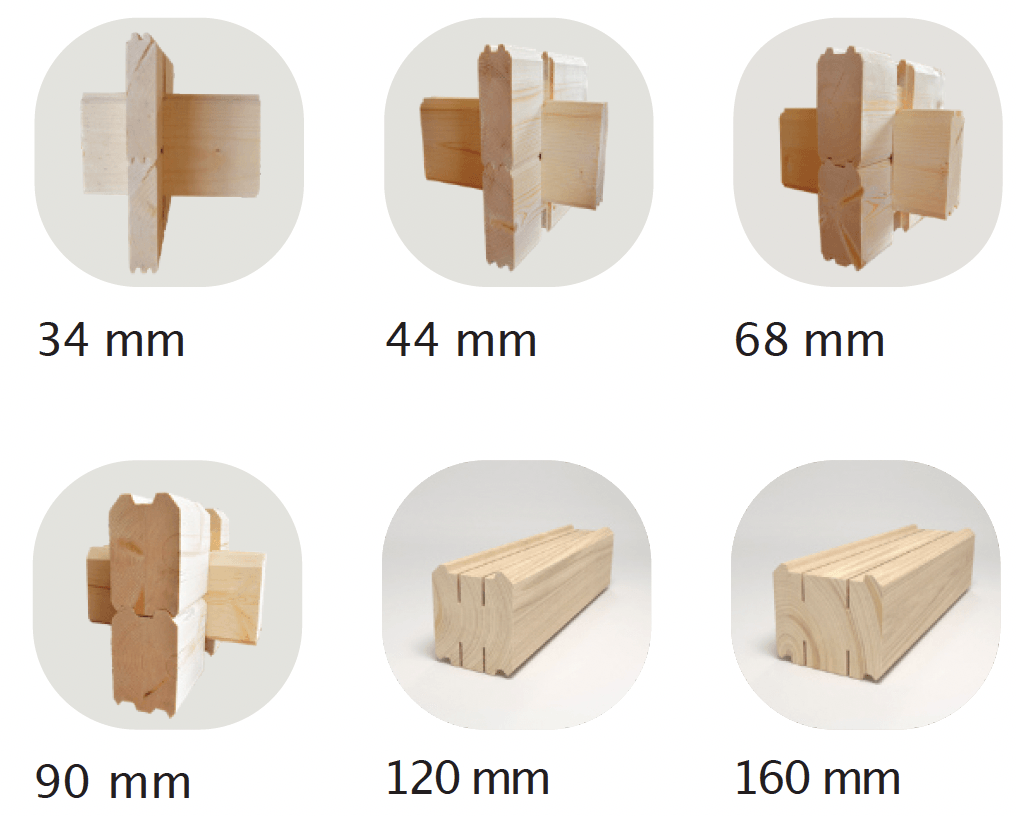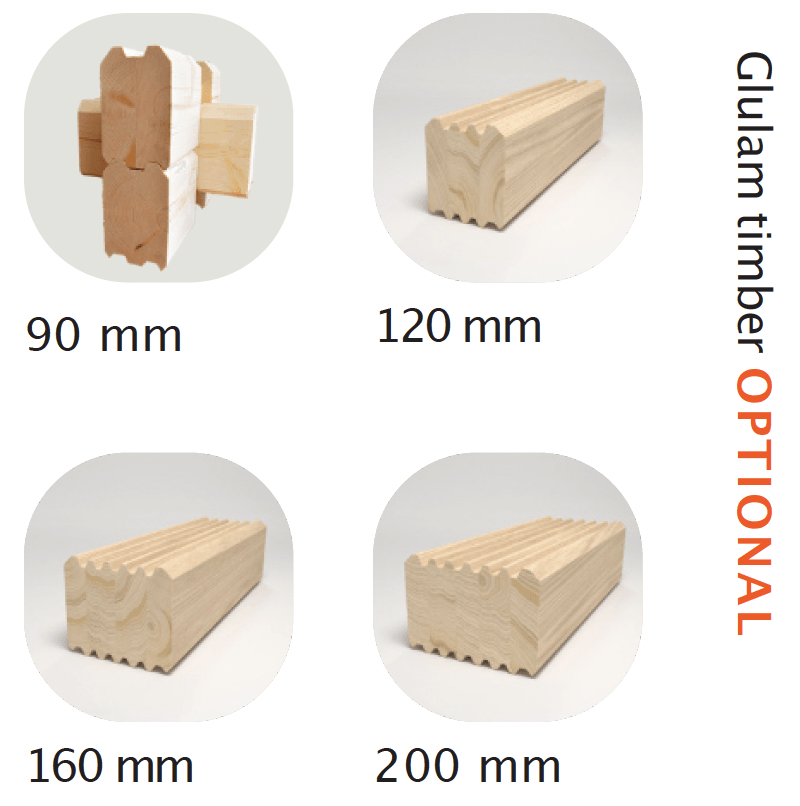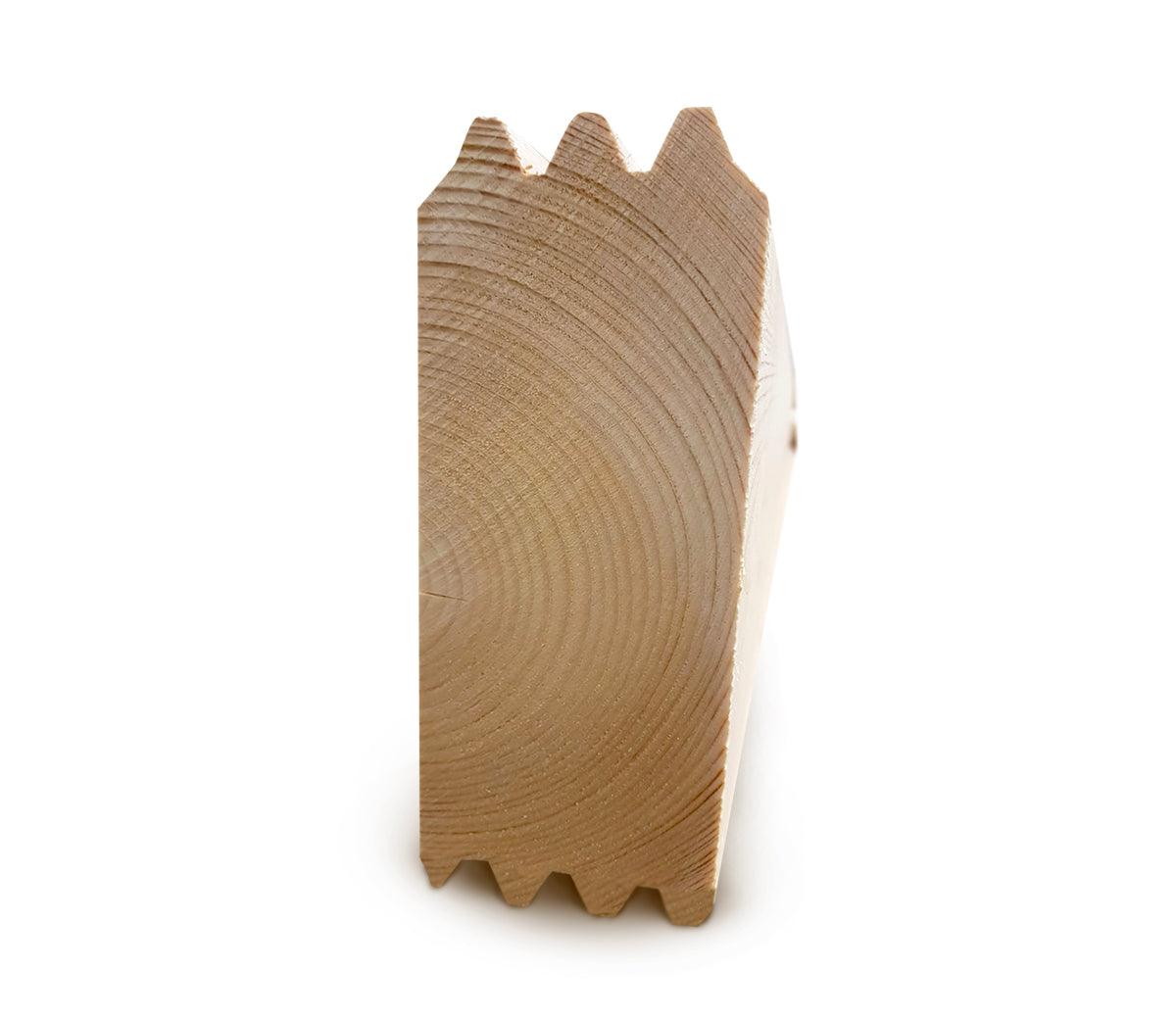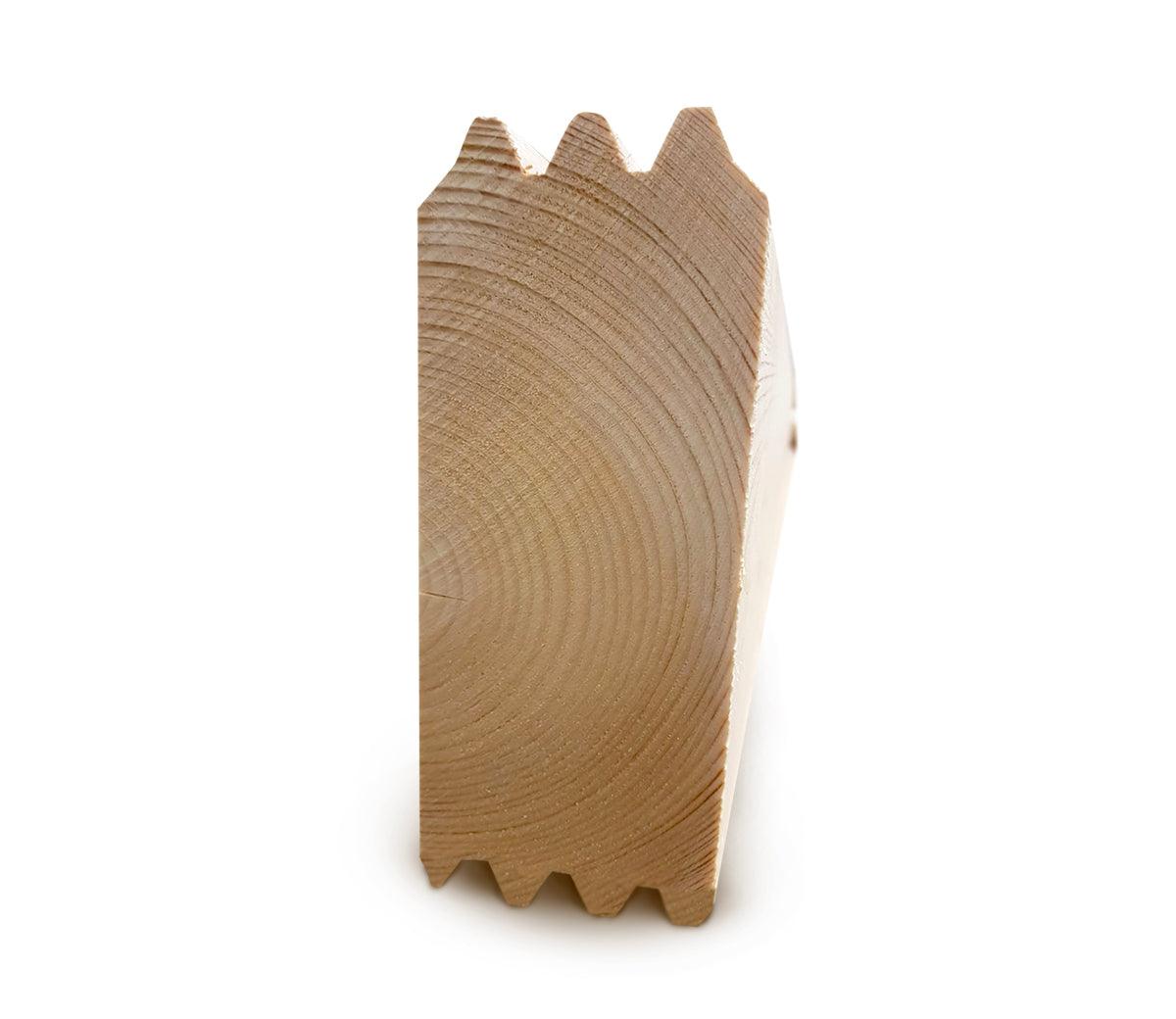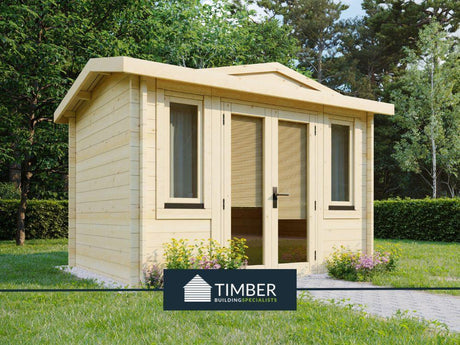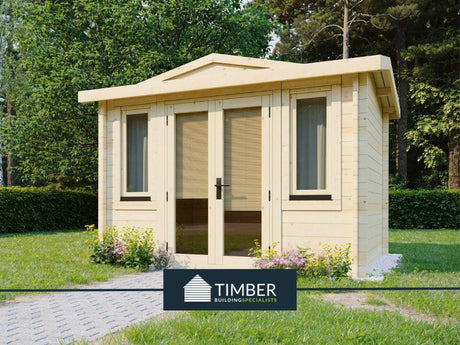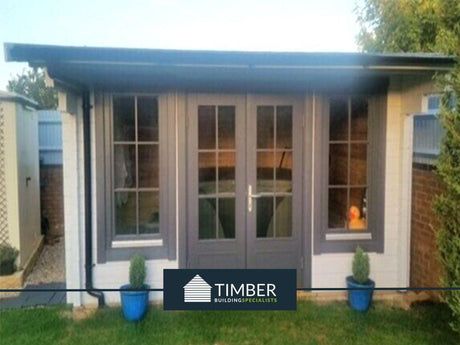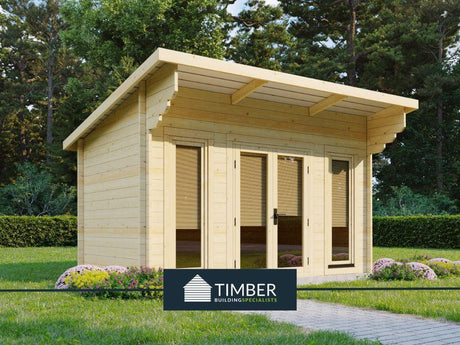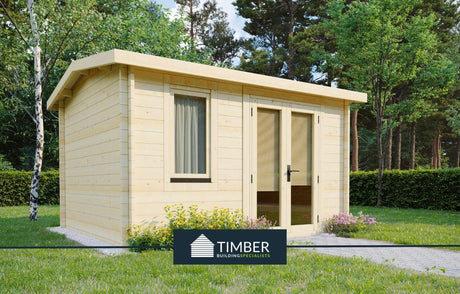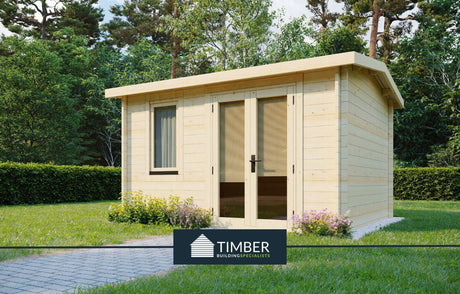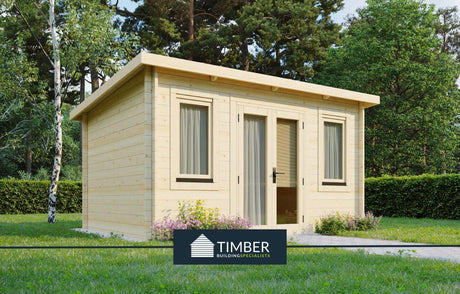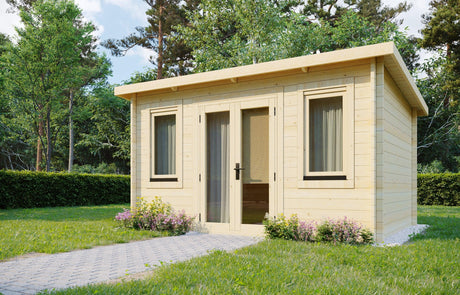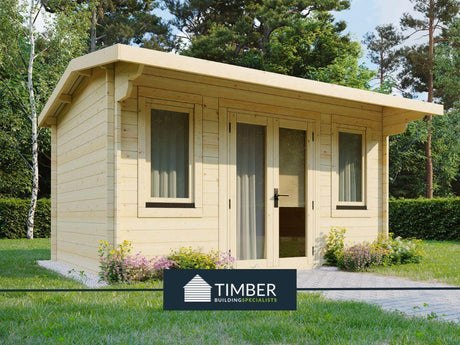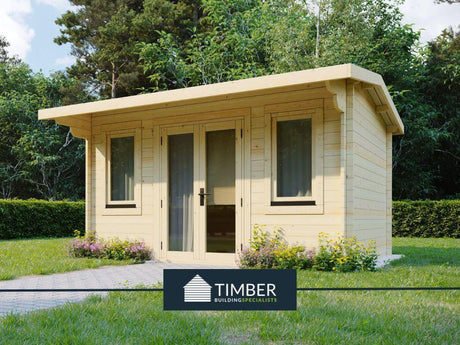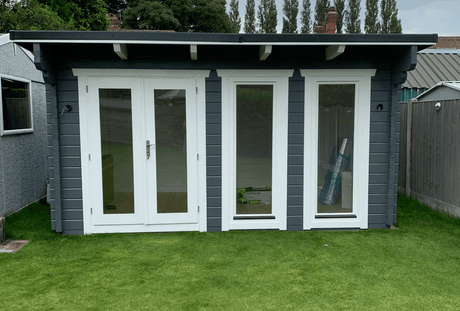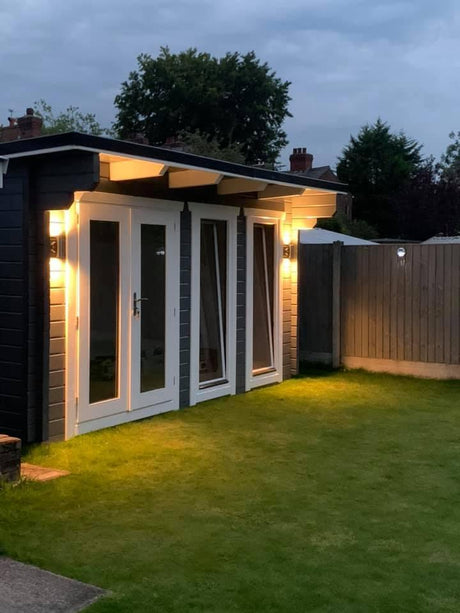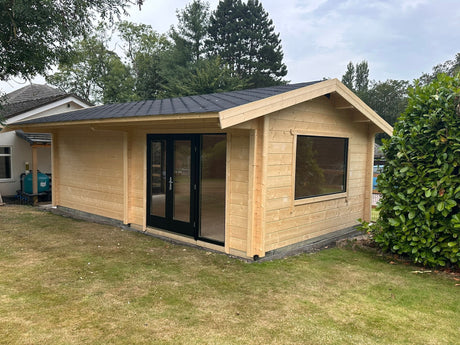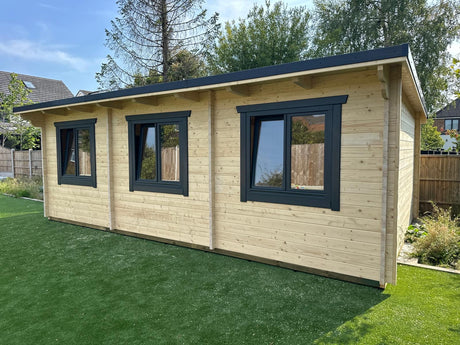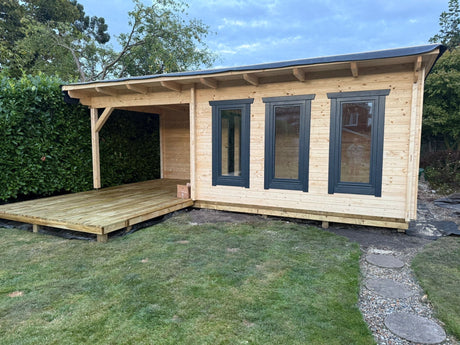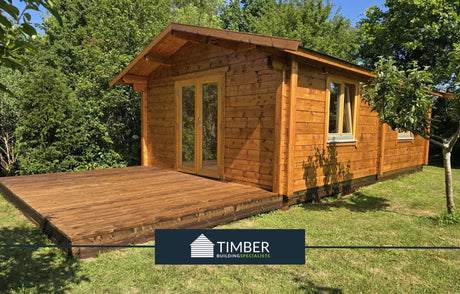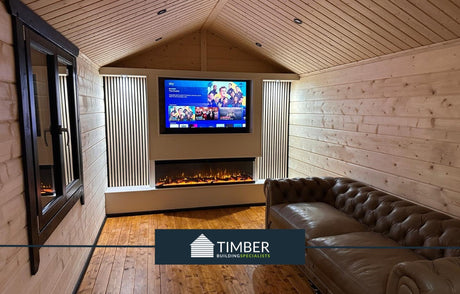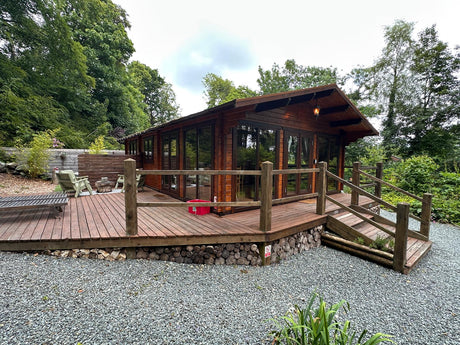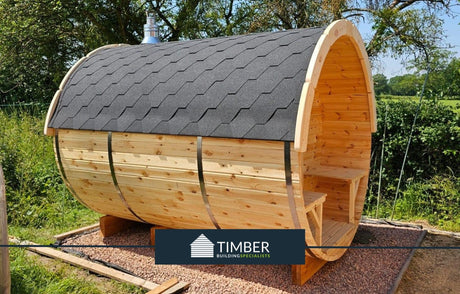In this blog, we will discuss the various log cabin thickness and glulam available in the UK market for people.
What is the best Log cabin Thickness for my log cabin?
Determining the optimal log cabin thickness is a crucial step in planning your garden retreat. The thickness of the logs not only influences the structural integrity of the cabin but also determines its insulation, durability, and suitability for different purposes. Log cabins offer a serene escape from the hustle of urban environments, making them an ideal choice for those seeking tranquility.
Log thickness options range from 28mm to 160mm, each designed to meet specific needs and budgets. For instance, 28mm logs are affordable and suitable for lighter structures, while 34mm and 44mm variants are commonly used for standard garden cabins, offering enhanced stability. Thicker logs, such as 68mm, 70mm and 90mm, provide excellent insulation and are ideal for year-round use, making them popular for residential or lodge-style cabins. The most robust choices, ranging from 120mm to 160mm, are used for commercial constructions, where durability and extended lifespan are paramount.
Understanding the specific requirements of your cabin, including its intended use and seasonal exposure, will help you select the appropriate log thickness. This ensures your structure is both functional and long-lasting.
Types of log cabin thickness
- 28 mm thick logs are the cheapest and thinnest logs available on the market. For people with a low budget, this log thickness is perfect for building cabins.
- 34 mm thick logs are the standard thickness of logs and are generally used for building log cabins across the world.
- 44 mm thick logs are the standard logs used in the United Kingdom. They are again used for building log cabins throughout the country.
- 68 to 70 mm thick logs are used for building log cabins extensively due to their enhanced stability and durability. They have the power to withstand the wrath of nature and the changing seasons for a long time.
- 90 mm thick logs are used for lodge-style log cabins and residential log cabins. Unlike retreat log cabins which are used for residential purposes for a couple of weeks or months each year, these log cabins are extensively used throughout the year.
- 120 to 160 mm log cabin thickness is the heaviest and thickest logs utilised in the commercial market. They are rigid, strong, and extremely durable among the rest. Although they are difficult to work with, they provide extreme protection against nature and can last up to decades to come.
Types of logs based on material
Based on the demand, requirement, and prices, people need to choose the log with the thickness which they think is best for their log cabins. Log cabins are a great way to log out from the daily hassles, struggles of leading a corporate life, and disconnecting from the concrete jungles of cities. Based on how often people want to reside in their log cabins, they can choose the thickness of the logs and begin their work.
Logs are also available as glued laminated timbers, which are abbreviated as glulam. They are created after adding multiple layers of solid lumbered wood together with high-powered adhesive. Glulam is again available in several thickness varieties ranging from 90mm glulam, 120mm glulam, 160mm glulam to 200mm glulam. They are innovative and versatile and can be used for both residential and commercial projects and purposes.
Thus, depending on the requirement and budget that people have, they can choose from a variety of log cabin thickness for their cabins.
